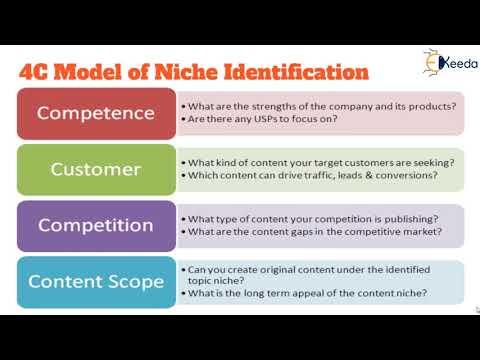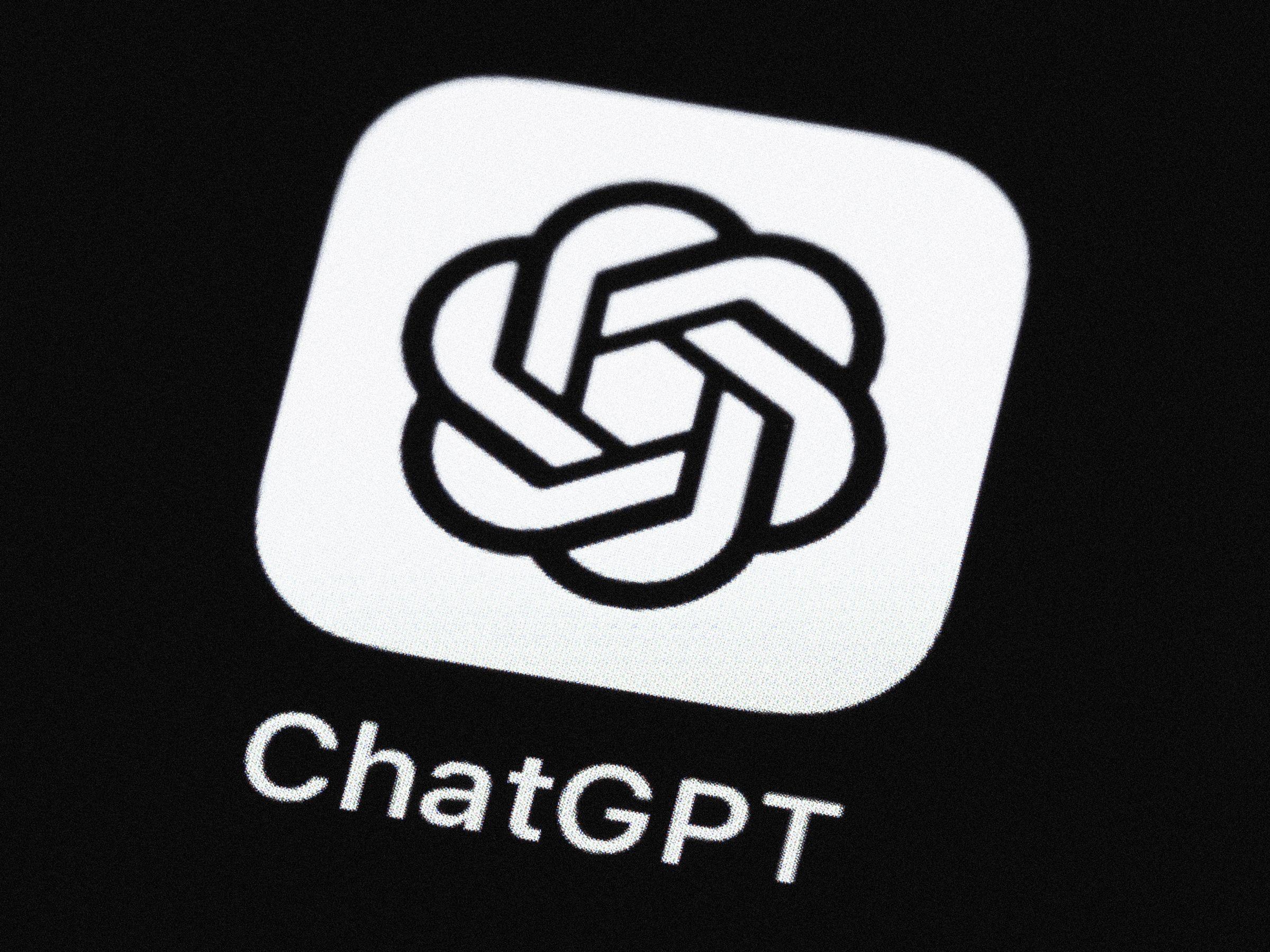Are you looking to turn your passion for writing into a thriving career? Or perhaps you want to enhance your skills to stand out in the crowded digital landscape? If so, you’re in the right place! in today’s fast-paced world, content is king, and skilled content writers are in high demand. But how do you go from an aspiring writer to a sought-after content creator? The journey may seem daunting, but with the right roadmap, you can navigate your way to success. In this article, we’ll break down the essential steps you need to take to hone your craft, build a portfolio that catches eyes, and master the art of engaging storytelling. Whether you’re a seasoned writer looking to fine-tune your skills or a newbie eager to dive in, this guide will equip you with the tools and insights to become a skilled content writer.So, grab your notebook, and let’s embark on this exciting journey together!
Understanding the Basics of Content Writing
Content writing is more than just stringing words together; it’s an art form that requires skill, strategy, and a deep understanding of your audience. To be effective, every piece of content must serve a purpose, whether that’s to inform, entertain, or persuade. Here’s what you need to know to get started:
Know Your Audience: Understanding your target audience is crucial. Ask yourself:
- Who are they? Consider demographics such as age, occupation, and interests.
- What do they need? Identify their pain points and how your content can address them.
- How do they consume content? Tailor your approach based on whether they prefer articles, videos, or podcasts.
Keep It clear and Engaging: Clarity is key in content writing. Choose words that resonate with your audience and make your message easy to understand. Use a conversational tone, and don’t be afraid to infuse your personality into your writing. Here are some tips:
- Use simple language and avoid jargon.
- Break up the text with headings and bullet points.
- Incorporate visuals to enhance understanding and retention.
Optimize for Search Engines: Even the most compelling content can go unnoticed if it isn’t optimized for search engines. Start with keyword research to find relevant terms your audience is searching for. Once you have your keywords, integrate them naturally into:
- Headings
- Subheadings
- The first paragraph
- Meta descriptions
| Content Element | Purpose | Best Practices |
|---|---|---|
| Headings | Structure content for readability | Use H1, H2, H3 tags appropriately |
| Images | Enhance engagement and understanding | Use alt text for accessibility |
| Links | Provide additional value and context | Link to reputable sources |
By mastering these basic principles, you can begin to craft content that not only captures attention but also drives action. Whether you’re writing blog posts, articles, or product descriptions, these foundational elements will set you on a path toward becoming a skilled content writer.

Identifying Your Niche and Target Audience
Finding your niche is essential for standing out in the crowded world of content writing. A niche allows you to focus your efforts, ensuring that your content resonates with a specific segment of readers. To identify your niche, consider your passions, expertise, and the topics that excite you. By combining these elements,you can create a unique voice that attracts a loyal audience.
Next, it’s crucial to pinpoint your target audience. Understanding who you are writing for will guide your content strategy effectively. ask yourself the following questions:
- Who are they? Consider their demographics, such as age, gender, location, and career.
- What are their interests? What topics engage them, and what challenges do they face?
- Where do they hang out? Are they frequenting social media platforms, forums, or blogs?
Once you have this details, create a reader persona. This persona serves as a representation of your ideal reader and helps streamline your writing process. Here’s a simple table to illustrate a reader persona:
| Attribute | Description |
|---|---|
| Age | 25-35 years |
| Profession | Young Professionals/Students |
| Interests | Personal Finance, Travel, Technology |
| Challenges | managing finances, Time management |
Additionally, research your competitors to gain insights into the type of content that resonates with your potential audience. analyze their writing styles, topics, and engagement metrics. This analysis will not only help you refine your niche but also uncover gaps in the market where you can position yourself effectively.
don’t be afraid to evolve. Your niche and audience may change as you grow as a writer. Stay open to feedback and adapt your strategy accordingly. By continuously honing in on your niche and understanding your audience, you will build a loyal following that values your unique insight and expertise.

Mastering the Art of Research and Fact-Checking
In the digital age, is essential for any content writer who aspires to create engaging and credible material. With information at our fingertips,the ability to sift through data and discern fact from fiction can set you apart in a crowded market. Here are some strategies to enhance your research skills:
- Dive into Reputable Sources: Always start your research with established databases, academic journals, and trusted news outlets. This ensures the information you gather is credible and reliable.
- Utilize Research Tools: Leverage tools like Google Scholar, JSTOR, or even specialized websites related to your niche. These platforms can provide you with in-depth studies and articles that support your writing.
- Cross-Verify Information: Never take information at face value. Cross-check facts across multiple sources to confirm their accuracy. If the same fact appears in several credible sources,it’s likely trustworthy.
- Keep Track of Your Sources: maintaining a well-organized list of your research sources will save you time when it comes to citing references or revisiting a topic later.
Incorporating effective fact-checking methods into your writing process is equally critical. Here are a few best practices to consider:
- Use Fact-Checking Websites: Websites like Snopes,FactCheck.org, and PolitiFact are great resources for verifying claims, especially in a world filled with misinformation.
- Stay Updated: Follow industry trends and developments. Subscribe to newsletters or join forums that focus on your niche to stay informed about the latest findings and best practices.
- Engage with Experts: Don’t hesitate to reach out to professionals or academics in your field. Many are willing to share their insights and can provide invaluable information that can enrich your content.
To further illustrate these points, consider the following table that highlights the advantages of diligent research and fact-checking:
| Advantage | Description |
|---|---|
| Enhanced Credibility | Readers trust well-researched content, which can elevate your reputation as a writer. |
| Informed Decision-making | Fact-checked content empowers readers to make informed choices based on accurate information. |
| Improved Engagement | Quality content that’s rich in facts draws in audiences and encourages discussions. |
By honing your research and fact-checking skills, you not only improve the quality of your writing but also foster a deeper connection with your audience.When readers recognize the effort you put into ensuring accuracy, they are more likely to return for more, enhancing your credibility and boosting your career as a content writer.
Crafting Compelling Headlines that Grab Attention
Headlines are your first impression—they can either engage a reader or send them scrolling past your content. To craft headlines that truly capture attention,consider these key strategies:
- Use Power Words: Select words that evoke emotion or curiosity. Phrases like “ultimate,” “secret,” or “proven” can boost engagement.
- Keep It Short and Sweet: Aim for headlines that are concise yet compelling. Ideally, keep them under 60 characters for optimal visibility on search engines.
- Ask Questions: Headlines that pose questions can pique interest and encourage readers to seek answers within your content.
- incorporate Numbers: Lists and statistics convey value and attract attention. For example, “5 Ways to Improve Your Writing Today” is more enticing than “ways to Improve Your Writing.”
- Be Specific: Vague headlines can confuse potential readers.Clearly articulating the benefit or topic creates a stronger allure.
To illustrate these strategies, consider the following table showcasing examples of effective and ineffective headlines:
| Effective Headlines | Ineffective Headlines |
|---|---|
| 10 Proven Tips for Crafting Irresistible headlines | Tips for Writing Headlines |
| How to Write Headlines that Convert readers into Customers | headlines That Work |
| The Secret to Catchy Headlines: A Writer’s Guide | writing Advice |
don’t underestimate the importance of testing and tweaking your headlines. Utilizing A/B testing can reveal which variations resonate best with your audience. By continually refining your approach, you’ll not only improve your headline writing skills but also enhance overall reader engagement with your content.
developing Your Unique Writing Style and Voice
finding your voice as a writer is not just about stringing words together; it’s about expressing your thoughts in a way that resonates with readers. To carve out your unique writing style, start by embracing your individuality. Think about your experiences, interests, and passions—these elements will serve as the foundation of your voice. Consider the following approaches to help you along the way:
- Read widely: Immerse yourself in different genres and styles. Pay attention to what captivates you and why.
- Experiment: Try various writing techniques and formats. Whether it’s poetry, storytelling, or informative articles, don’t shy away from mixing things up.
- Practice Regularly: Writing is a skill that improves with time. Make it a habit to write every day, even if it’s just a few sentences.
Another critical aspect of developing your writing style is understanding your audience. Knowing who you’re writing for can significantly influence how you communicate your ideas. Tailor your language, tone, and complexity to meet the expectations and preferences of your target readers. Create reader personas to visualize your audience’s demographics and preferences, which can guide your writing approach.
| Reader Persona | Preferred Style | Content Type |
|---|---|---|
| Young Professionals | Concise & Professional | Guides & Articles |
| Creative Writers | Descriptive & Artistic | Stories & Essays |
| Tech Enthusiasts | Analytical & Detailed | Reviews & Tutorials |
don’t forget the power of authenticity. Readers are drawn to writers who are genuine and honest in their expressions. Share your thoughts, opinions, and emotions openly. It’s this vulnerability that can forge a deeper connection with your audience.remember, your unique outlook is what sets you apart, so don’t hesitate to let it shine through your work.
Utilizing SEO Techniques to Enhance Your Content
Implementing effective SEO techniques is crucial for any content writer aiming to increase their visibility and engagement. By optimizing your content for search engines, you not only improve it’s chances of ranking higher but also ensure that it reaches the right audience. Here are some key strategies to consider:
- Keyword research: Identify the keywords and phrases your target audience is using to search for information related to your content.Tools like Google Keyword Planner and SEMrush can help.
- On-Page SEO: Incorporate your primary keyword naturally within the title, headings, and body of your content. Don’t forget to use it in the meta description and alt text for images.
- Quality Content: Ensure that your content is informative, engaging, and valuable. High-quality content tends to attract backlinks, which can significantly boost your SEO performance.
- Internal Linking: Include links to other relevant pages on your website to help search engines understand your content structure and keep readers engaged longer.
- Mobile optimization: With an increasing number of users accessing content via mobile devices, make sure your site is mobile-kind. This includes responsive design and fast loading times.
Another essential aspect is to maintain a clear content structure. Using headings and subheadings not only makes your content easier to read but also helps search engines crawl your site more effectively. Ensure your headings include relevant keywords but remain natural and engaging.
Consider utilizing social media platforms as part of your content strategy. Sharing your posts on social media channels not only drives traffic but can also lead to increased backlinks when others find your content valuable. Engage with your audience there, encouraging shares and discussions that can further boost your SEO.
| SEO Technique | Description |
|---|---|
| Keyword Optimization | Using targeted keywords effectively throughout your content. |
| Mobile Optimization | Ensuring content is accessible and user-friendly on mobile devices. |
| Internal Linking | Connecting your content to related articles within your site. |
| Quality Content | Providing valuable information that engages and informs your audience. |
By adopting these strategies, you can significantly enhance your content’s reach and overall effectiveness.It’s about creating a synergy between your writing skills and SEO practices that not only captivates readers but also meets the demands of search engines.

Building a portfolio That Showcases Your Skills
Crafting a portfolio that captures your essence as a content writer is essential in showcasing your skills to potential clients and employers. A well-curated collection of your work not only highlights your writing abilities but also demonstrates your versatility and understanding of different topics. Here’s how to create a portfolio that truly stands out:
- Diversify Your samples: Include a range of writing pieces – blog posts, articles, social media content, and even copywriting examples. This variety will illustrate your adaptability and skill in catering to different audiences and formats.
- Focus on Quality: Select pieces that reflect your best work.It’s better to have a few exceptional samples than a large number of mediocre ones. Choose writings that showcase your unique voice and creativity.
- Highlight Your Niche: If you specialize in a particular area, such as technology, health, or travel, ensure your portfolio reflects this. Employers frequently enough look for expertise in specific domains, so make your niche clear.
Consider the visual presentation of your portfolio as well. A clean, organized layout not only makes it easier for potential clients to navigate but also adds a professional touch. You can use a simple table to categorize your work, making it visually appealing and easy to digest:
| Type of Content | Title | Link |
|---|---|---|
| Blog Post | The Future of AI in Everyday Life | Read More |
| Article | 10 Tips for Healthy Living | Read More |
| Copywriting | Elevate Your Brand with Compelling Copy | Read More |
Lastly, don’t forget to include a brief introduction about yourself at the beginning of your portfolio. This should encapsulate your writing philosophy, passion for content creation, and any relevant experience. A personal touch can help to build a connection with potential clients.

Networking with Other Writers and Industry Professionals
Connecting with fellow writers and industry professionals is essential for anyone looking to excel in content writing. Building a network not only opens up opportunities for collaboration but also provides a support system that can be invaluable in your career. Here are some effective strategies to enhance your networking skills:
- Attend Workshops and Conferences: Participating in events specific to writing can introduce you to like-minded individuals. These gatherings frequently enough feature keynote speakers who are established in the industry, providing insights and inspiration.
- Join Writing Groups and Associations: Becoming a member of organizations such as the Association of Writers & Writing Programs (AWP) or local writing groups can help you connect with others in your field.
- Utilize Social Media Platforms: Platforms like Twitter, LinkedIn, and Instagram are fantastic for networking. Engage with fellow writers and industry professionals by commenting on their posts, sharing valuable content, or even direct messaging to introduce yourself.
- Start a Blog or Vlog: Sharing your thoughts on writing techniques, trends, or your personal experiences can attract attention from those in the industry. It’s also a great way to showcase your skills and personality.
When you do meet other writers, remember that networking is a two-way street. Here are some tips to foster meaningful connections:
- Be Genuine: Authenticity goes a long way. Show genuine interest in others’ work and experiences.
- Follow Up: After meeting someone, send a swift follow-up message. This can be as simple as thanking them for their insights or sharing an article you found relevant to your conversation.
- Collaborate on Projects: Look for opportunities to work together on writing projects or initiatives.Collaborations can lead to shared exposure and growth.
| Networking Possibility | Benefits |
|---|---|
| Workshops | Learning new techniques and meeting industry veterans. |
| Writing Groups | Constructive feedback and motivation from peers. |
| Online Forums | Access to a global community and diverse perspectives. |
| Social Media | Real-time interaction and building your professional brand. |
Ultimately, the relationships you build can lead to mentoring opportunities, collaborations, and job referrals. Embrace the journey of networking; it’s not just about what you can gain but also what you can contribute to the writing community. Your unique voice and experiences can enrich conversations and inspire others, making every connection meaningful and beneficial in your path to becoming a skilled content writer.

Staying Updated on Industry Trends and Best Practices
To thrive in the ever-evolving landscape of content writing, it’s crucial to remain attuned to the latest industry trends and best practices. The digital world changes rapidly, and what works today might not hold the same value tomorrow. Hence, continuous learning and adaptation are vital for any skilled content writer.
Engaging with a variety of resources can help you stay informed. Consider the following avenues:
- online Courses: platforms like coursera and Udemy offer courses that cover the latest content writing techniques and strategies.
- Webinars and workshops: These provide real-time insights and the opportunity to interact with industry experts.
- Industry Blogs and Newsletters: Subscribe to reputable sources like Content Marketing Institute and HubSpot to receive regular updates and tips.
Moreover, networking with other professionals in the field can yield meaningful benefits. Joining communities, whether online or in-person, allows you to share experiences, gain insights, and learn from others’ successes and failures. Platforms such as LinkedIn and Twitter can be invaluable for connecting with like-minded individuals and thought leaders.
Taking the time to analyze the work of prosperous writers can also provide a roadmap for your growth. Look at their writing styles, content strategies, and how they engage their audience. You might find inspiration in:
| Writer | strengths | Key Takeaways |
|---|---|---|
| Neil Patel | SEO Mastery | Focus on keyword research and optimizing content for search engines. |
| Ann Handley | Storytelling | Craft narratives that resonate with the audience. |
| Brian Dean | Content Promotion | Utilize effective promotion strategies to maximize reach. |
don’t underestimate the power of feedback. Actively seek critiques on your work from peers or mentors. Constructive criticism not only improves your writing skills but also helps you align your content with current trends and audience expectations.

Embracing Feedback and Continuous Improvement
Receiving feedback can often feel daunting, yet it’s a crucial stepping stone on your journey to becoming a skilled content writer. The ability to embrace constructive criticism not only enhances your writing quality but also fosters personal growth. Consider feedback as a treasure trove of insights that reveal your strengths and pinpoint areas for improvement.
To effectively integrate feedback into your writing process, try these strategies:
- Stay Open-Minded: Approach feedback with a willingness to learn. Instead of perceiving criticism as a personal attack, view it as an opportunity to refine your skills.
- Ask Specific Questions: when seeking feedback, be clear about what aspects you want to improve. This can guide reviewers to provide more targeted suggestions.
- Implement Suggestions: take actionable steps based on the feedback you receive.This shows that you value the input and are committed to your growth.
Moreover, establishing a routine for seeking feedback can be incredibly beneficial. Consider creating a feedback loop where you consistently share your drafts with peers or mentors. This ongoing dialog not only helps you stay accountable but also cultivates a supportive writing community.
| Feedback Type | examples | Benefits |
|---|---|---|
| Peer Review | Sharing drafts with fellow writers | Diverse perspectives and collaborative growth |
| Professional Editing | Hiring an editor for polished content | Enhanced readability and professionalism |
| Self-Review | Reflecting on your own work | Increased self-awareness and critical thinking |
Remember, the path to mastery is paved with continuous improvement. As you incorporate feedback, you’ll notice a shift in your writing style and substance. Track your progress over time, and celebrate the small victories along the way. Each piece of feedback is a step toward honing your craft, and with each revision, you become a more confident and skilled writer.
frequently Asked Questions (FAQ)
Q&A: How to Become a Skilled Content Writer – A Clear roadmap
Q: What is the first step to becoming a skilled content writer?
A: The first step is to understand the basics of writing. this includes grammar, punctuation, and sentence structure. You don’t need to be an English major,but having a solid grasp of these fundamentals is crucial. Consider taking online courses or reading books about writing to build your foundation.
Q: Do I need to have a specific niche to be a successful content writer?
A: Not necessarily! While having a niche can be beneficial, especially for building expertise and authority, many successful content writers are versatile. Start by exploring various topics that interest you. As you gain experience, you may naturally gravitate towards specific areas that you enjoy writing about the most.
Q: How critically important is research in content writing?
A: Research is absolutely vital! As a content writer,you need to provide accurate,valuable,and engaging information to your readers. Good research not only enhances the credibility of your content but also helps you understand the nuances of the topic,making your writing more insightful and meaningful.
Q: What are some effective ways to improve my writing skills?
A: Practice makes perfect! Write regularly, and don’t shy away from experimenting with different styles and formats. Additionally, seek feedback from peers or mentors. Joining writing groups or communities can also provide support and constructive criticism. Remember, every piece you write is a step toward improvement!
Q: How can I find my writing voice?
A: Finding your voice takes time and experimentation. Read widely and write often—this will help you identify what resonates with you. Your voice is a reflection of your personality, so let it shine through! Don’t be afraid to be authentic and share your unique perspective.
Q: What role does SEO play in content writing?
A: SEO, or search Engine Optimization, is crucial in today’s digital landscape. understanding SEO helps your content reach a wider audience. Familiarize yourself with basic SEO principles,like keyword research and optimizing your content structure. This knowledge will significantly boost your visibility and effectiveness as a content writer.
Q: How can I build a portfolio as a new writer?
A: Start by creating a blog or contributing to online platforms. This allows you to showcase your work and develop your personal brand. You can also write guest posts for established websites or offer your services on freelance platforms. As you build your portfolio, focus on diversity in topics and styles to demonstrate your versatility.Q: Is networking critically important for content writers?
A: Absolutely! Networking can open up many opportunities, from collaborations to job offers. Engage with other writers, editors, and potential clients on social media platforms like LinkedIn or Twitter.Attend workshops and webinars to meet industry professionals. Building a strong network can provide valuable insights and support in your writing career.
Q: What should I do if I encounter writer’s block?
A: Writer’s block happens to everyone! When it strikes, try stepping away from your work for a bit—take a walk, read something inspiring, or practice free writing to get the creative juices flowing. Sometimes, shifting your focus or changing your surroundings can reignite your motivation. Remember, it’s okay to take breaks; just keep coming back to your writing.
Q: How long will it take to become a skilled content writer?
A: There’s no set timeline! Everyone progresses at their own pace.with consistent practice and a commitment to improvement, you can start feeling more confident in a few months. Becoming truly skilled frequently enough takes years of experience, but each step you take will bring you closer to your goal. Stay patient and persistent!
Q: Any final tips for aspiring content writers?
A: Stay curious and keep learning! The world of content writing is always evolving, so stay updated on trends, new tools, and techniques. Embrace challenges as opportunities for growth, and never underestimate the power of perseverance. Your passion and dedication will shine through in your writing,attracting readers and clients alike. Happy writing!
Key Takeaways
As we wrap up this roadmap to becoming a skilled content writer, remember that every expert was once a beginner. Embrace the learning process, stay curious, and don’t shy away from challenges—they’re your greatest teachers.
Start by honing your writing skills, exploring various niches, and gathering feedback. Surround yourself with a community of writers, and keep your passion for storytelling alive. With dedication and practice,you’ll not only find your unique voice but also connect with readers in meaningful ways.
So, are you ready to take the plunge and start your journey? Dive in, keep writing, and watch as your skills flourish. the world is waiting for your words—let’s get started!




